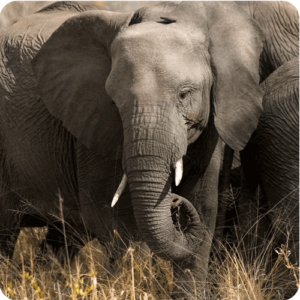The Role of Zoos in Modern Conservation: A Balancing Act
Zoos have evolved significantly from their original purpose of entertainment to becoming key players in global conservation efforts.
The zoo’s giant tortoise exhibit is home to some of the oldest and slowest animals on the planet. These tortoises, native to the Galápagos Islands, can live for over 100 years. The exhibit focuses on their unique adaptations, slow metabolism, and the conservation efforts needed to protect these ancient reptiles from extinction.

Penguins are always a crowd-pleaser, and the zoo’s penguin exhibit replicates the cold, coastal habitats these flightless birds call home. Watching penguins dive into icy waters and waddle on land is both educational and entertaining. The exhibit emphasizes the effects of climate change on penguin populations, making it both fun and informative.

The meerkat enclosure offers a close-up view of these curious, social animals as they stand on their hind legs, dig for food, and interact with their group. Visitors can observe how meerkats work together to look out for predators and care for their young. The exhibit highlights the importance of cooperation in the survival of this fascinating species.

The flamingo exhibit is one of the most colorful areas of the zoo, with dozens of pink flamingos wading in a shallow lagoon. Visitors can learn about the unique diet that gives flamingos their distinctive color and observe their graceful movements. The exhibit also focuses on the wetland habitats where flamingos thrive and the conservation efforts to protect these important ecosystems.
 Frogs, toads, and salamanders take center stage in the zoo’s amphibian exhibit. These creatures, known for their permeable skin and dual life in water and on land, play a crucial role in ecosystems as both predators and prey. Visitors can learn about the delicate balance of amphibian populations and the threats they face from pollution and climate change.
Frogs, toads, and salamanders take center stage in the zoo’s amphibian exhibit. These creatures, known for their permeable skin and dual life in water and on land, play a crucial role in ecosystems as both predators and prey. Visitors can learn about the delicate balance of amphibian populations and the threats they face from pollution and climate change.
 The desert exhibit transports visitors to a world of sand, cacti, and extreme temperatures. Animals like the fennec fox, desert tortoise, and rattlesnake have adapted to survive in this harsh environment. The exhibit highlights the amazing survival strategies of desert animals and the importance of conserving arid regions.
The desert exhibit transports visitors to a world of sand, cacti, and extreme temperatures. Animals like the fennec fox, desert tortoise, and rattlesnake have adapted to survive in this harsh environment. The exhibit highlights the amazing survival strategies of desert animals and the importance of conserving arid regions.
 The butterfly garden is a peaceful, vibrant space filled with hundreds of butterflies from around the world. Visitors can walk among the butterflies, observing their delicate flight and vibrant colors up close. The garden also educates visitors on the life cycle of butterflies, the importance of pollinators, and the threats these fragile insects face from habitat destruction and climate change.
The butterfly garden is a peaceful, vibrant space filled with hundreds of butterflies from around the world. Visitors can walk among the butterflies, observing their delicate flight and vibrant colors up close. The garden also educates visitors on the life cycle of butterflies, the importance of pollinators, and the threats these fragile insects face from habitat destruction and climate change.
 The penguin exhibit offers an immersive look into the cold, coastal habitats of these flightless birds. Visitors can watch penguins swim gracefully through icy waters and waddle on land. The exhibit educates visitors about penguins’ natural behavior, their adaptations to extreme climates, and the threats they face due to climate change.
The penguin exhibit offers an immersive look into the cold, coastal habitats of these flightless birds. Visitors can watch penguins swim gracefully through icy waters and waddle on land. The exhibit educates visitors about penguins’ natural behavior, their adaptations to extreme climates, and the threats they face due to climate change.
Red pandas are a visitor favorite, with their playful behavior and unique appearance. The zoo’s red panda exhibit mimics the temperate forests of the Himalayas, offering them plenty of trees to climb and space to roam. The exhibit also highlights conservation efforts aimed at protecting this endangered species, whose numbers are declining due to habitat loss.
The African savanna exhibit replicates the wide, open grasslands of Africa, home to iconic animals such as lions, giraffes, and elephants. Visitors can observe these majestic creatures in large, naturalistic enclosures that mimic their native habitats. The exhibit emphasizes the balance between predator and prey, offering a glimpse into the complex ecosystem of the African plains.
"My visit to the zoo was an absolute delight! The enclosures are spacious and designed to mimic the animals' natural habitats, which made the experience feel very authentic. I loved the gorilla exhibit—watching them interact with each other was mesmerizing. The staff was incredibly friendly and knowledgeable, always ready to answer any questions. It’s clear the zoo takes animal care and conservation very seriously. Overall, I left feeling both entertained and educated. I highly recommend visiting!"

"This zoo exceeded my expectations! The layout is great, with easy navigation between different exhibits. My kids especially loved the marine life section, where we could walk through an underwater tunnel and see sharks and rays swimming above us. The educational programs were engaging, and it’s clear the zoo emphasizes the importance of conservation. The polar bear exhibit was another highlight, with plenty of information about the effects of climate change. A fantastic day out for families!"

"Such a fantastic zoo! The variety of animals is impressive, and the zoo really emphasizes conservation efforts. I was particularly impressed with the endangered species breeding programs. Seeing animals like rhinos and tigers, which are at risk in the wild, was a powerful experience. The staff also does a great job of providing information about how visitors can help protect wildlife. It’s a must-see for anyone interested in animals and conservation."

"This is one of the best zoos I've ever visited! The exhibits are not only well-maintained but also very informative. I loved the rainforest area—it felt like stepping into a real jungle. The butterfly garden was also a beautiful, peaceful spot. I appreciated how much effort the zoo puts into educating visitors about the threats many species face. It’s a perfect balance of fun and learning, making it an ideal trip for both adults and children."

The butterfly pavilion is a tranquil, colorful space where visitors can observe a variety of butterfly species fluttering around. The pavilion provides information about the life cycle of butterflies, their role as pollinators, and the importance of protecting habitats like meadows and forests to ensure the survival of these delicate insects.

Zoos have evolved significantly from their original purpose of entertainment to becoming key players in global conservation efforts.

When the sun goes down, an entirely different world of animals comes to life.

Modern zoos are dedicated to providing their animals with habitats that resemble their natural environments as closely as possible.

Animal enrichment is a crucial aspect of modern zoo management, designed to keep animals mentally and physically stimulated.

Climate change is affecting animals in both the wild and in zoos, creating new challenges for conservationists and zookeepers alike.

Aquariums play a crucial role in marine life conservation, offering a unique opportunity to study and protect ocean species while educating.

The gorilla enclosure is one of the zoo’s most dynamic exhibits, featuring a group of gorillas living in a naturalistic forest habitat.



